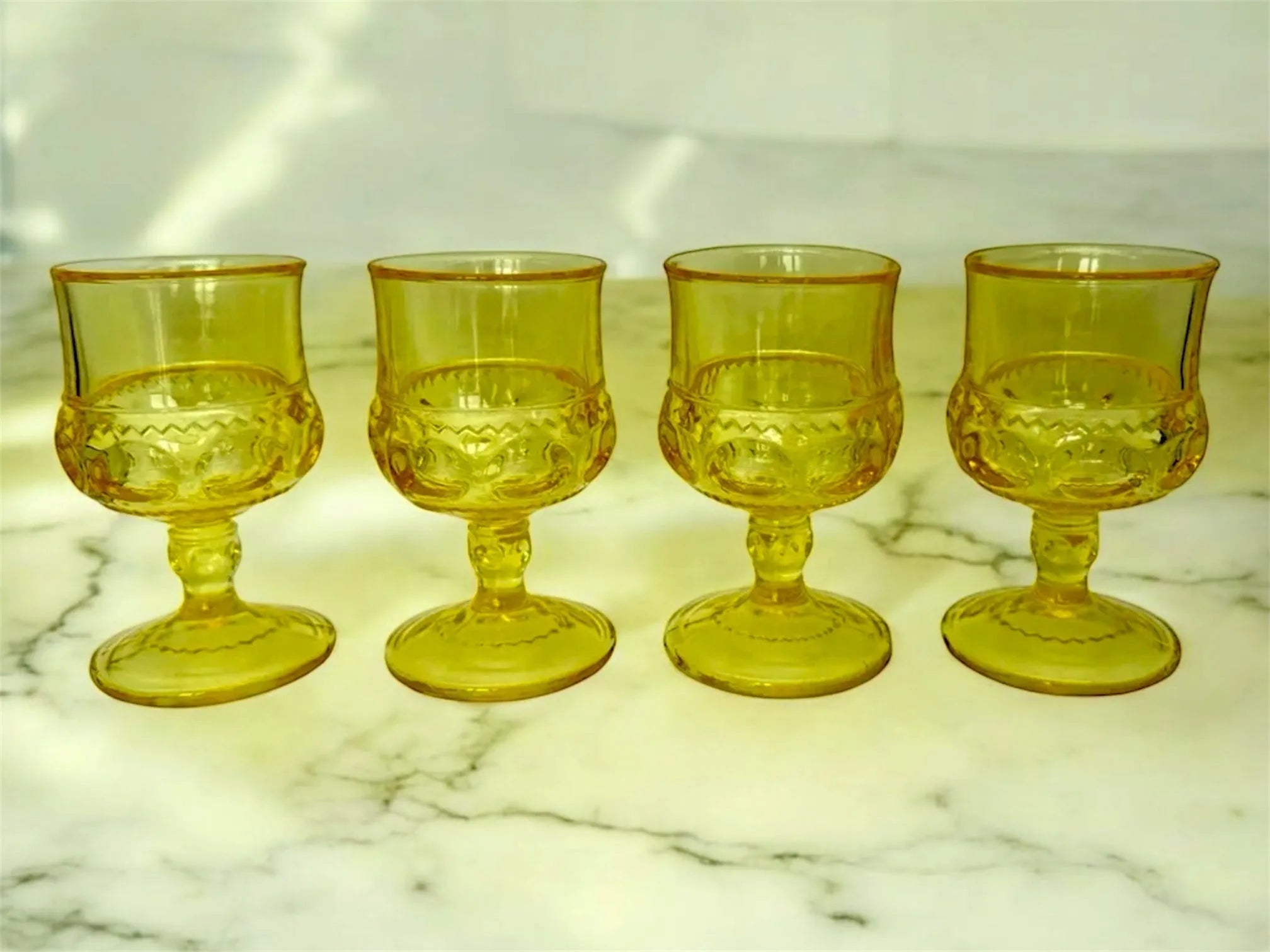Kings Crown glassware (also called Thumbprint pattern) is one of the most iconic vintage pressed glass designs, beloved by mid-century enthusiasts and Depression glass collectors. At Jewelry Bubble, our Indiana Glass Kings Crown Thumbprint Glass Set embodies this timeless American craftsmanship. In this guide, you’ll learn:
- The 130-year evolution of the Kings Crown pattern
- How to distinguish Indiana Glass pieces from Tiffin/U.S. Glass Co. versions
- Care tips to preserve your collectible glassware
- Why this pattern remains a staple of vintage collections
The History of Kings Crown Glassware
Origins: Adams & Co. (1890-1891)
The pattern began as XLCR (Excelsior) in 1890 by Adams & Company. Early pieces featured:
- Deep ruby staining on upper sections
- Nine rounded thumbprints with zigzag borders
- Thick, heavy glass construction
U.S. Glass Co. Era (1892-1963)
After acquiring Adams & Co. in 1891, U.S. Glass Co. expanded the line with:
- New colors like amber, blue, and green
- Renamed Dubonnet (1943) and later Kings Crown (1952)
- Banded ruby/blue finishes and floral engravings
Indiana Glass Company (1959-1971)
Indiana Glass revolutionized the pattern by:
- Introducing solid-color pieces (no staining)
- Using rounded thumbprints vs. Tiffin’s oval shapes
- Producing vibrant hues like bright yellow (like our set)
Legacy: Colony Crown (1971-1985)
After Lancaster Colony acquired Indiana Glass, they:
- Streamlined production as Colony Crown
- Focused on tableware over decorative pieces
How to Identify Indiana Glass Kings Crown
Key Features
| Characteristic | Indiana Glass | Tiffin/U.S. Glass |
|---|---|---|
| Thumbprint Shape | Round | Oval |
| Rim Style | Straight | Flared |
| Color Application | Solid throughout | Banded/stained |
| Mold Seams | 2 seams | 3 seams |
| Common Colors | Yellow, amber, crystal | Ruby, blue, cranberry |
Example: Our Kings Crown Glassware Set shows classic Indiana traits: straight sides, rounded thumbprints, and vibrant solid yellow coloring.
Collector FAQs
-
How do I authenticate Kings Crown glassware?
- Check for mold seams (2 = Indiana; 3 = Tiffin)
- Use UV light: Indiana’s post-1959 pieces often fluoresce
- Look for “IGC” or “Lancaster” markings (rarely present)
-
What makes yellow Kings Crown special?
- Exclusive to Indiana Glass’ 1959-1971 production
- Highly sought-after due to bold mid-century aesthetic
- Pairs beautifully with atomic-era décor
-
How should I clean and store these pieces?
- Hand-wash only (dishwashers damage iridescence)
- Store upright with felt separators
- Avoid direct sunlight to prevent color fading
Why Collect Kings Crown Glassware?
Investment Value
- Complete sets appreciate 8-12% annually
- Rare colors (yellow, purple) command 3x premium
Styling Ideas
- Tablescapes: Pair with Fiestaware or Franciscan Starburst
- Bar Cart: Use as cordial glasses for vintage cocktails
- Display: Showcase in lighted china cabinets
Explore More at Jewelry Bubble
Love this guide? Discover other mid-century treasures reads:
- The Timeless Charm of Depression Glass: Exploring the Rare Pink Cube Butter Dish
- 10 Must-Have Milk Glass Pieces Every Collector and Home Stylist Should Own
- Discover the Timeless Charm of Jadeite Egg Cups: Perfect Vintage Kitchenware Collectibles



0 comments